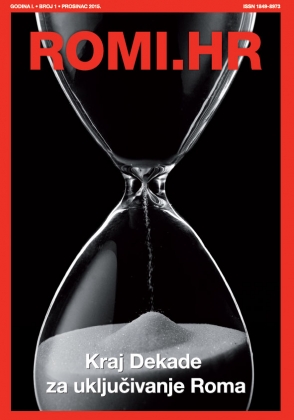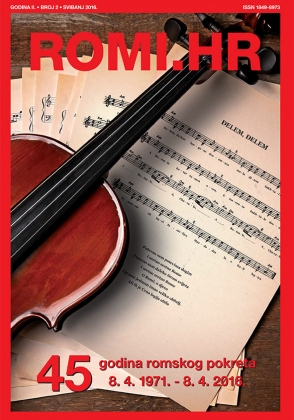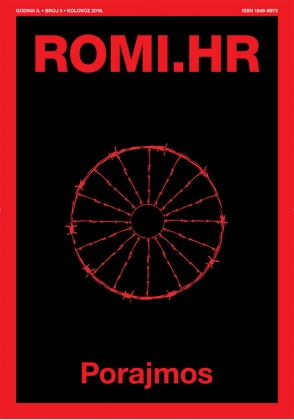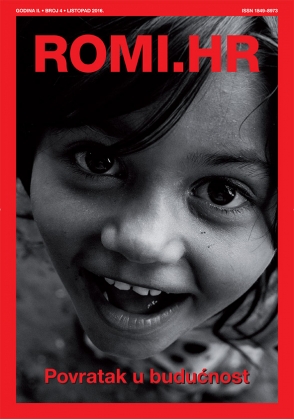Fokus ROMI.HR
/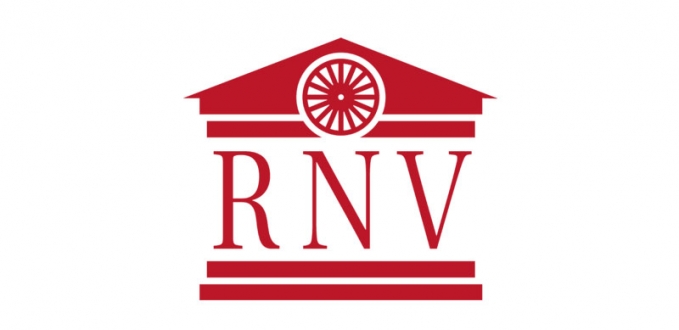
Već nekoliko stoljeća pogranična regija između Njemačka i Danska, po imenu Schleswig, mijenjala je svoje granice nekoliko puta. Sadašnja granica određena je referendumima održanim 1920. godine, a odluka je na snazi od 1945. godine. Dansko-njemačko pogranično područje pozitivan je primjer za druge pogranične regije.
Njemačko-Danska pogranična regija Schleswig primjer je kako se može uspješno rješavati problemi manjina. Na temelju gorke prošlosti, stanovništvo je uspjelo naučiti kako živjeti u miru. Ta gorka prošlost uključivala je mnoge ratove između stanovnika regije ili između država koje su željele iskoristiti priliku za proširenje svog teritorija. Naime, dva se od tih ratova se naročito pamte: Drugi rat za Schleswig, u kojem se Danska borila protiv Prusije i Austrije, i naravno njemačka invazija na Dansku neposredno prije Drugog svjetskog rata. Dobri susjedski odnosi koji prevladavaju nose pravo značenje izraza "mirni suživot".
Ova pogranična regija danas je također primjer pravnog okvira koji sadrži prava Danaca u Njemačkoj, Nijemaca u Danskoj kao i Frizijaca da se uključe u društvene i političke aktivnosti. Dansko Ministarstvo obrazovanja zbog toga je surađivalo s Ministarstvom obrazovanja njemačke pokrajine Baden-Württemberga kako bi razvilo i provelo program razmjene između gimnazijskih studenata u obje zemlje.
Jedan od najvažnijih koraka u ovom dobrom odnosu između te dvije zemlje bila je Rezolucija Aabenraa. Ova je rezolucija usvojena 16. i 17. studenoga 1918. godine na sastanku u Aabenrai, i zahtijevala je da se granica između Danske i Njemačke povuče nakon referenduma. Sjeverni Schleswig trebao je odlučivati kao jedna biračka jedinica, ali susjedne četvrti u južnom Schleswigu, uključujući i glavni grad Flensburg, mogle su odlučivati na razini općina, ako to zahtijevaju.

Dana 10. veljače 1920. godine, 102.000 ljudi glasalo je u prvoj zoni. Ukupno 75 posto glasova u Danskoj bilo je za ponovno ujedinjenje Sjevernog Schleswiga s Danskom, dok je 25 posto željelo ostati s Njemačkom. U drugoj zoni, 14. ožujka 1920. godine glasalo je 65.000 ljudi. Ovdje je 80 posto podržalo ostanak srednjeg Schleswiga u Njemačkoj, a 20 posto željelo je ponovno ujedinjenje s Danskom.
Rezultat je bio jasan, a u ljeto 1920. granica je bila određena u skladu s rezultatima referenduma. Nijemci u Sjevernom Schleswigu i Danci u Južnom Schleswigu tada su postali nacionalne manjine u Danskoj odnosno Njemačkoj i oni i danas, svojim specifičnostima, ostavljaju trag na pogranično područje. Pravičan i demokratski referendum omogućio je mirno i trajno rješenje dansko-njemačkog graničnog sukoba.

Nakon tzv. Plebiscita iz 1920. godine, ime pod kojim je poznat Referendum iz 1920. godine, usvojena je i Kopenhagen-Bonska deklaracija iz 1955. godine. U njoj se izričito navodi da pripadnost njemačkoj manjini u Danskoj ili danskoj manjini u Njemačkoj ne može biti predmet nadzora od strane vlada.
Nadalje, obje države, Savezna Republika Njemačka, kao i Kraljevina Danska dužne su poštovati određena pravna načela. Među njima su, na primjer, sloboda ispovijedanja lojalnosti, tako da službene vlasti ne mogu poduzimati bilo kakve radnje kada Nijemci koji žive u Danskoj pokazuju odanost njemačkoj državi i obrnuto.
Također, Kopenhagen-Bonska deklaracija izričito navodi jezik kao važnu točku. Tako da pripadnici njemačke manjine ne mogu biti spriječeni da govore i pišu jezik po svom izboru, a isto vrijedi i za pripadnike danske nacionalne manjine u Njemačkoj.
Danas oko 15.000 Nijemaca živi u regiji Northschleswig, koja ima ukupno oko 250.000 stanovnika. Njemačka nacionalna manjina ima vlastite vrtiće, škole i knjižnice, obavlja crkveni i socijalni rad, izdaje vlastite dnevne novine i nudi sportske i kulturne aktivnosti u mnogim klubovima. Pripadnike njemačke nacionalne manjine koji žive u Northschleswig-u predstavlja organizacija Bund Deutscher Nordschleswiger. Ista prava i sličnu organizaciju ima i danska manjina u Njemačkoj.

DEEP MINORITY BOUNDS BETWEEN DENMARK AND GERMANY
For several centuries the border region between Germany and Denmark, called “Schleswig”, changed several times. The present border was determined by referendums in 1920 and is respected since 1945. The Danish-German border area has been named as a positive example for other border regions.
The German-Danish border region has provided examples of how the problems of minorities can be dealt with. Based on a bitter past, the population here has been successful in learning how to live together peacefully. This bitter past included many wars between inhabitants of the region, or between states wanting to seize the opportunity to enlarge their territory. Namely two of those wars are exceptionally remembered: the Second Schleswig War, in which Denmark fought Prussia and Austria, and of course the German invasion of Denmark in the dawn of the second world war. The good neighbourly relations which prevail give concrete meaning to the term "peaceful coexistence."
Today, the legal framework for the rights of the Danish and German minorities and of the Frisians to engage in social and political activities is also exemplary. That’s why the Danish Ministry of Education (Undervisningsministeret) cooperated with the state of Baden-Württemberg's Ministry of education, (Kultusministerium), to develop and carry out an exchange programme between gymnasium students in both countries.
One of the most important steps to this good relation between those two countries, was The Aabenraa resolution. on 16/17 November 1918 this resolution was adopted at the Aabenraa meeting, demanding that the border be drawn following a referendum. North Schleswig was to vote as one, but the adjacent districts in South Schleswig, including the principal town of Flensburg, could vote by municipality, if they so demanded.
On 10 February, 102,000 people cast their vote in the first zone. A total of 75 percent of the votes in Denmark were in favour of the reunification of North Schleswig with Denmark, while 25 percent preferred to remain with Germany. On 14 March, 65,000 people voted in the second zone. Here, 80 percent voted for mid-Schleswig to remain German and 20 percent voted for reunification with Denmark.
The result was clear, and in the summer of 1920, the border was set in accordance with the results of the referenda. The German-minded people in North Schleswig and the Danish in South Schleswig then organized themselves into national minorities, who even today continue to put their mark on the border area. A fair and democratic referendum provided a peaceful and lasting solution to the Danish-German border conflict.
After the so called 1920-plebiscite, which was the name given to the referendum, the 1955 Copenhagen-Bonn Declaration was added. It explicitly states that an individual's membership of the German minority in Denmark or the Danish minority in Germany may not be a matter of scrutiny from the respective governments.
Furthermore, both States, the Federal Republic of Germany, as well as the Kingdom of Denmark are bound to execute certain legal principles. Among those are for example the freedom to profess one’s loyalty, so that no official authority will step in when Germans living in Denmark confess loyalty to the German state and vice versa.
Also, The Copenhagen-Bonn Declaration explicitly mentions language as an important point. So that members of the German minority and their organizations may not be hindered from speaking and writing the language of their choice and the same goes for the Danish in Germany.
Today around 15.000 Germans live in region of Northschleswig, which has around 250.000 inhabitants. The German ethnic group maintains its own kindergardens, schools and libraries, does ecclesiastical and social work, publishes its own daily newspaper and offers sports and cultural activities in many clubs. The German Nordschleswiger are represented by the Bund Deutscher Nordschleswiger. The Danish minority in Germany has the same rights and similar organization.
 Povratak na Fokus
Povratak na Fokus

